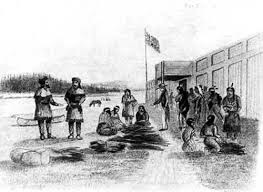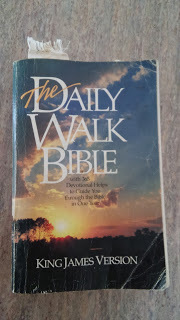Sue Merrell's Blog: Laughing for a Living, page 13
March 6, 2016
A Crane in the family
 The Indians called him The Crane. Historians call him a mountain man, a contemporary of William Sublette and Jim Bridger. I call him Uncle Sam.
The Indians called him The Crane. Historians call him a mountain man, a contemporary of William Sublette and Jim Bridger. I call him Uncle Sam.Samuel Tullock was one of the six sons of widow Jemima Tullock. She moved her boys to the Missouri territory in 1814 when Sam was 13. A decade later, Sam was a trapper and fur trader for the American Fur Company. He injured his wrist in a brawl at the fur traders' rendezvous in Idaho in 1827 and lived with a permanently withered hand. Didn't slow him down much. He slugged a Frenchman named Bray who teased him about his hand at a Wyoming rendezvous in 1829. Bray never got up again.
Sam built two forts in Montana for the American Fur Company: Ft. Cass in 1832 and Ft. Van Buren in 1835. Both forts were on the Yellowstone River, near the Big Horn River, in the middle of Crow country. He traded with the Indians: seven fur robes for a flint-lock gun, six robes for a red blanket.
Sam returned to Missouri in 1839, married an Irish immigrant and raised seven kids. He served as a county judge in Iron County, Mo., from 1858-1860 and lived to be almost 80.
But he left his name in Montana where Tullock Creek still flows into the Big Horn River less than a mile from where the Big Horn empties into the Yellowstone River.
Published on March 06, 2016 16:19
February 26, 2016
Anna's eyes
 I recognize those eyes, deep-set like mine. But the eyes of Margaret Anna Jamison saw much horror in her short life.
I recognize those eyes, deep-set like mine. But the eyes of Margaret Anna Jamison saw much horror in her short life.Anna -- she went by her middle name just as I do -- was my grandmother's grandmother. Grandma, by the way, had those deep-set eyes too.
Ten years before the Civil War, when Anna was 17, she married Coatsworth Pinkney Tharp. He had been the husband of her sister Jane who died in childbirth. Anna married a ready-made family with her sister's three-year-old daughter, Eliza Jane.
In the 1850s, C.P. acquired 420 acres in the southern Missouri hills of the newly formed Dent County. As the farm grew, so did the family. By the time Lincoln was elected president in 1860, they had five children.
But as the country fell apart, so did their lives. Missouri was a border state. Most of the people didn't want to secede, but they didn't support the war either. As a result, Union soldiers marched across the state and treated everyone as the enemy. They attacked farmers, took their livestock, burned their homes.
Anna's brother, James Jamison, was arrested for defending his home against the soldiers. He escaped from the federal prison and rode with the "bushwhackers" like Bill Wilson and Quantrill's Raiders.
Family tradition says the soldiers invaded Anna's farm too, and hung C.P. Anna cut down her husband, and he survived. But her babies didn't do as well. Two infant daughters died during the war years. But Edwin, born in 1862, survived. He was Grandma's father.
Anna's last baby, Evaline, was born in 1866. The war was over, but all the fight had gone out of Anna. She died two months after Evaline was born.
Anna was only 32.
Published on February 26, 2016 08:10
February 17, 2016
Stuck on single ply?
 Toilet paper is so taxing! Which is the better buy? Eight mega rolls or sixteen super rolls?. Both packages claim to be equal to 32 regular rolls, and neither package is small enough to fit under the bathroom sink.Take your pick for $10. That's a lot of green for the ultimate throw-away. But wait. Here's a package that claims to be equal to 32 regular rolls and it's only $6.
Toilet paper is so taxing! Which is the better buy? Eight mega rolls or sixteen super rolls?. Both packages claim to be equal to 32 regular rolls, and neither package is small enough to fit under the bathroom sink.Take your pick for $10. That's a lot of green for the ultimate throw-away. But wait. Here's a package that claims to be equal to 32 regular rolls and it's only $6.I was debating these high finance options in the grocery store the other day when a woman I didn't know joined me with the same lament. We compared inches and centimeters; claims of softness and strength. Then we spotted the truth. The $6 option was "single ply."
In other words, not enough thickness to keep your hand dry.
"I've worked too many years to save money on single ply," I said, tossing the $10 package of mega rolls into my cart.
The other woman sighed and settled for the $6 option. "Once the kids move out maybe I can splurge on double ply."
Published on February 17, 2016 18:34
February 4, 2016
Don't be coy, Koi
 A small square pond behind the Audubon House in Key West boasts some of the biggest Koi I've ever seen. The flashy orange and white fish almost burst out of the space.
A small square pond behind the Audubon House in Key West boasts some of the biggest Koi I've ever seen. The flashy orange and white fish almost burst out of the space.Somehow it seems appropriate for a house that naturalist painter John James Audubon never entered. In fact, when Audubon visited Florida in the 1830s, the house wasn't even built yet. The house that was on the property at that time was destroyed by a hurricane in the 1840s, and the current house built to replace it. Turns out, the only connection to the famous painter is that he used a plant from the property as the background for his painting of the White Crowned Pigeon.
But the legend that a famous person had something to do with the house saved it from destruction in the 1950s and inspired a lovely restoration of the home of Capt. John Geiger, including three floors of Audubon prints and a lush tropical garden.
If it was called the Geiger house, however, it wouldn't attract nearly as many visitors. In the end, what difference does it make if an 1830s painter sat in the parlor or painted on the porch or never set foot on the property? The restoration is well done, the tour guides informative, and the visit well worth the time.
The lesson here is to crow about yourself. Take that claim to fame even if it is a thin thread. Don't be coy, be Koi.
Published on February 04, 2016 07:16
January 27, 2016
Why me?
 Sometimes an error in a book jumps out at me like an unintended villain, a snarling surprise that interrupts the story.
Sometimes an error in a book jumps out at me like an unintended villain, a snarling surprise that interrupts the story.About half of my 40-year career in journalism was spent editing and rewriting other people's stories. I just can't turn it off.
I'm not as persnickety as some professional editors who know the rules for commas better than the names of their children. My strong suit is rewriting for clarity and smoothness.
Usually, if the story is good enough, I can read right over a run-on sentence or misplaced modifier. But sometimes those errors grab me by the throat and won't let go.
Recently I was reading The Good Girl, a fairly complex thriller by Mary Kubica.Labeled a national bestseller, the book has excellent pacing including a final surprise in the last word. But right away I noticed awkward sentences that could have benefited from a rewrite. Then I stumbled upon a singular verb used with a plural subject. But the mongrels that kept nipping at me were object pronouns, used incorrectly in several spots.
Consider this sentence:
"We sit in the waiting room, James, Mia and me, Mia sandwiched in the middle like the cream filling of an Oreo cookie."
Never mind that these phrases are squished together with a smattering of commas that would give a copy editor nightmares. The monster that growls too loudly to be ignored is the object pronoun "me." These three people are not the objects of any action. They are stand-ins for the subject of the sentence, "We." Would you say "Me sit in the waiting room"? Heavens, no!
Miss Hill, my seventh-grade English teacher, would be throwing an eraser across the room to get the attention of whoever wrote this sentence.
I hesitate to point this out because I am sure readers can find typos in my books. But Jane, my editor, would never miss this one. To my mind, that's where the blame belongs. Mary Kubica has written an amazing story, but her editor either didn't have adequate training or adequate time to polish the work properly.
I see it happening more and more these days, not just in self-published works that may not have professional editing, but also in books from major publishers. Writing has become slap-dash. It's like an assembly line turning out cars that run well but haven't been painted. Good grammar is not a corner that can be cut.
Published on January 27, 2016 12:27
January 24, 2016
Me first!
 The latest ancestor in my genealogy quest is Robert Eakin Miller, reportedly the first white male born in Kentucky. I say reportedly because several people claim this dubious honor.
The latest ancestor in my genealogy quest is Robert Eakin Miller, reportedly the first white male born in Kentucky. I say reportedly because several people claim this dubious honor. Robert was born Aug. 28, 1780, at Bear Grass Fort (Louisville) to Major John Miller and his wife Ann McClintock. Thirty-six years later, Robert's daughter, Ann Mariah Miller, married my son's ancestor, Joseph William Wallace.
In the History of Bourbon, Scott, Harrison and Nicholas Counties, Kentucky, author William Perrin wrote "Robert Miller, born 1780, is said to be the first male child born in the state." Perrin's book came out in 1882. That same year Collins' Historical Sketches of Kentucky lists a dozen babes who claim to be the first white birth in the state, several of them males, and all before Robert's 1780 debut.
This all goes to reinforce my journalism training to avoid claims of first, or oldest, or any other "est" unless the parameters are very controlled and knowable. The real lesson is it doesn't matter. What's the difference if Robert was the first or fiftieth child born to white settlers in the territory that would become Kentucky? All that matters is that his parents were among the early settlers, and he was born into a world full of possibility.
Reminds me of that old joke: Men want the be a woman's "first." Women want to be a man's "last."
Published on January 24, 2016 13:08
January 20, 2016
Nibbling the scriptures
 Last week I read the story of Joseph and his brothers. This week it's Moses and the Exodus from Egypt.
Last week I read the story of Joseph and his brothers. This week it's Moses and the Exodus from Egypt.I am three weeks into the Daily Walk Bible. I bought this edition back in 1998. It was my new year's resolution that year to read the Bible cover to cover. The Daily Walk Bible divides the Bible into easy-to-read daily chunks, like a devotional . It made the task so easy, that I completed my resolution with relish and have repeated the process three or four times over the past 18 years. This year is my fifth time, I think.
I don't report this to brag about my devotion but to recommend the Daily Walk Bible. How do you eat an elephant? One bite at a time. How can you possibly read the whole bible? One verse at time.
Although it is packed with drama, the bible isn't the sort of book you can read once and call it done. Every time I find stories I've forgotten. Oddly, this time I find myself paying more attention to who begat who, probably because I'm working on my own family genealogy. And today's reading about Moses turning the Nile to blood reminded me of the poisoned water of Flint and the many "plagues" that beset us today.
I strongly recommend The Daily Walk Bible. Read the book, change your life.
Published on January 20, 2016 08:16
January 17, 2016
Perfection
 This is my place this winter: a slouchy chair in the dappled sun below loudly swishing palms. Perfect.
This is my place this winter: a slouchy chair in the dappled sun below loudly swishing palms. Perfect.It's so perfect that I have to pry myself out of the chair to go inside and get my phone so I can take a picture.
You see, even in paradise such perfection is rare. Except for a couple of sunny days, it's been raining since we arrived two weeks ago. And even then I can only sit outside today because the gale-force wind keeps the no-see-ums away. On a calm day, the blizzard of bugs keeps me cowered inside like a captive.
In an odd way this perfect combination of sun and wind reminds me a of Michigan snowstorm. Snow is so beautiful when it is falling, white-washing the world with glitter. That is until it piles up on the roads and driveways and makes a simple task like wheeling the trash to the curb almost impossible.
So I will wallow in my moment of perfection for as long as it lasts and try to ignore the clouds darkening in the west.
Published on January 17, 2016 10:41
December 22, 2015
Passing understanding
 One of the best things about being a Christian is the unexplainable sense of peace that accompanies trusting Jesus. Ask anyone who has let go and let God take over.
One of the best things about being a Christian is the unexplainable sense of peace that accompanies trusting Jesus. Ask anyone who has let go and let God take over.The great apostle Paul explains it this way in his letter to the Philipians: "Be anxious for nothing, but in everything by prayer and supplication with thanksgiving let your requests be made known to God. And the peace of God, which surpasses all comprehension, will guard your hearts and your minds in Christ Jesus."
I remember distinctly one night, many years ago, when my teenage son was out driving his car and it was past his curfew. I was sick with worry. I prayed, and the moment I accepted that God was in charge, my worry lifted like a bird fluttering away. I can't explain the peace that came over me.
I still worry needlessly, and try to fix things my way. But then I remember. Just let go and let God.
In this season when there seems to be so much strife in the hectic holiday schedule, and the angry political campaigning, and violent headlines, I believe the secret to Peace on Earth begins with that simple acceptance of Christ on a personal, individual level. I know it is incomprehensible that something so complex as International Peace could be rooted in something so simple accepting God's gift, but I think that is where it needs to begin.
As the song says: Let there be peace on earth and let it begin with me.
Published on December 22, 2015 19:48
December 21, 2015
Let it shine
 It's been many years since I went to a peace rally, but there was a good one tonight at First United Methodist Church where about 100 people gathered for a show of Unity in the Face of Fear. Members of the silent majority spoke out, even if it was just hearty "Amens" echoing through the room. "You can't be silent," said Grand Rapids City Commissioner Ruth E. Kelly. "We must speak out against the fear mongering."
It's been many years since I went to a peace rally, but there was a good one tonight at First United Methodist Church where about 100 people gathered for a show of Unity in the Face of Fear. Members of the silent majority spoke out, even if it was just hearty "Amens" echoing through the room. "You can't be silent," said Grand Rapids City Commissioner Ruth E. Kelly. "We must speak out against the fear mongering."Representatives of several area churches spoke briefly about about peace and justice for all people regardless of race or creed. They defended immigrants and refuges. "We're all one," said Methodist Bishop Deborah Kiesey. She reminded the crowd that Baby Jesus and his family were refuges when they fled to Egypt to avoid King Herod.
A spokesman for the local Muslim community quoted the poem Abou Ben Adhem by Leigh Hunt. In that poem Abou asks to be counted in the book of life as one who loves his fellow man. The evening ended with a candle lighting in the parking lot, a moment of silent prayer for unity and singing the song "This Little Light of Mine."
Funny. It was the shortest day of the year, made even darker by clouds. But the light is beginning to shine.
Published on December 21, 2015 21:50



